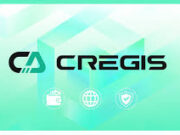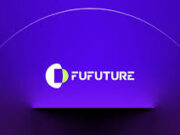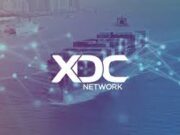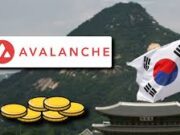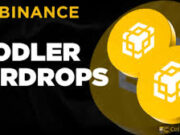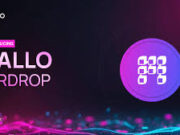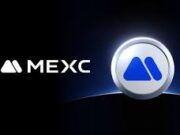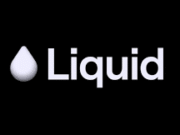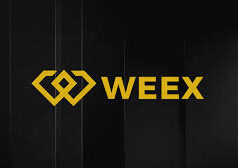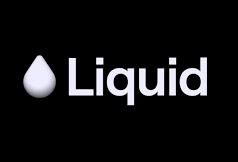Imagine: you’re in the European Union, you’ve been using Robinhood for crypto (or stocks) and suddenly you’re given access to U.S. stocks and ETFs — not in the traditional way, but via tokens on a blockchain. That’s essentially what Robinhood has introduced.
In late June 2025 Robinhood announced that it is launching tokenised versions of U.S. stocks and exchange-traded funds (ETFs) for its European Union users, underpinned by blockchain technology. (Reuters)
The core of this strategy: the assets are not just “regular” stock trades but tokens issued on a layer-two blockchain network, initially on Arbitrum. (CoinDesk) The idea is: broaden access, increase flexibility (trading hours etc.), and modernise how securities can be traded.
And though you mentioned “over 80 tokens” in your prompt, many media outlets report “over 200 U.S. stocks and ETFs” in this rollout. (Yahoo Finance)
What’s Behind It? Why Robinhood Is Doing This
This move makes sense on many levels — let’s walk through a few key drivers.
Democratising access
Robinhood has always positioned itself as a “democratised” broker. Tokenisation extends this further: by turning U.S. stocks and ETFs into tokens, European users may get easier access, fractional ownership, extended trading hours, and reduced barriers. (FinTech Weekly – Home Page)
Technological advantage: blockchain rails
By using Arbitrum (a layer-2 on Ethereum) and planning its own later, Robinhood is tapping into the blockchain infrastructure to issue, settle, and trade tokenised securities. (CoinDesk) The benefits cited include faster settlement, 24/5 trading (for now), self-custody possibilities, and more global access. (Reuters)
Expansion of addressable market
For Robinhood the EU rollout opens a large new market outside its U.S. core. If EU users adopt tokenised stocks, Robinhood can increase trading volume, user engagement and potentially fees or other monetisation. Analysts have flagged this as a meaningful growth vector. (MarketWatch)
Challenge legacy market hours and structure
Traditional equity markets operate limited hours (e.g., U.S. market hours). By tokenising stocks and enabling 24/5 (or even 24/7) trading, Robinhood is challenging the norm. (FinTech Weekly – Home Page)
How It Works (And What You Get)
Here’s a breakdown of what users in the EU can expect from this design.
- The tokenised asset corresponds to an underlying U.S. stock or ETF; Robinhood says it is fully backed by real shares held by the broker-dealer/clearing entity. (Banking Exchange)
- Users will receive dividends (for stocks that pay them) in the Robinhood app even though they’re holding tokens. (PYMNTS.com)
- The tokens trade onchain (on Arbitrum) and are thus subject to blockchain settlement logic, though Robinhood handles much of the back end. (FinTech Weekly – Home Page)
- Initially available to EU residents (or EU/EEA customers) and not yet to U.S. users in the same way — at least until regulatory clarity improves. (Reuters)
- Voting rights: many of these tokenised stocks do not include shareholder voting rights; the token is an exposure instrument rather than full share ownership. (JD Supra)
A Realistic View: Pros & Cons
Let’s be up-front. This is a powerful change, but not without caveats.
The upside
- Broader access: More users (esp in EU) can participate in U.S. equities.
- Extended trading windows: 24/5 trading means more flexibility for international investors.
- Fractional access: Possibly lower entry costs or ability to own smaller piece of expensive stocks/ETFs.
- Modern infrastructure: Blockchain rails may reduce friction, settlement delays, intermediaries.
The risks / limitations
- Regulatory uncertainty: Tokenised equities are still in a grey zone; especially true in the U.S. At the EU side, things may be clearer, but still evolving. (JD Supra)
- No voting rights: Token holders might not have the same rights as traditional shareholders. If that’s a key part of your investment thesis, you’re not necessarily getting it. (JD Supra)
- Liquidity & market structure: While tokens trade onchain, how deep the market is, how wide the spread is, and how it tracks underlying shares may vary.
- Technology risk: As with all blockchain systems, there may be smart-contract risk, infrastructure bug risk, or simply platform risk.
- Perception & adoption: Users may be uneasy trusting tokenised versions of “real world” assets; education will matter.
What This Means for European Investors
If you’re in the EU, what does this rollout mean for you personally? Here are some key take-aways and things to watch.
- You now may gain access to U.S. stocks/ETFs via tokenised format using your Robinhood EU account (assuming your country is covered and you meet eligibility).
- Ease of use: The token format means you may be able to trade outside standard U.S. market hours (for example earlier/later on the day) though note that 24/5 means nights/weekends may still be off-limits.
- Check costs and conditions: Look into whether trading tokens has the same fee regime (Robinhood emphasises commission-free) and how the spread/market makers behave.
- Understand what you own: Having the token means you have exposure to the underlying asset, but not necessarily all the rights of a shareholder (such as voting).
- Watch regulatory disclaimers: Since tokenised assets are somewhat novel, read the terms, understand custodianship, understand settlement risk.
- This could open the door to more “real world assets” tokens: For example private companies, real estate, other funds may follow. As one piece commented: “the tokenization of real-world assets is [..] the holy grail”. (PYMNTS.com)
Broader Implications: The Market & Financial Infrastructure
Beyond individual investors, Robinhood’s move has broader significance.
- Old markets vs new rails: Traditional stock markets are bounded by geography, hours, clearing systems. Tokenisation on blockchain allows outside-the-box alternatives — wider hours, global users, reduced friction.
- Competition intensifies: Other brokers/exchanges will need to respond. We’re entering an era where “crypto” and “traditional” finance blur: brokers become “investment super-apps”.
- Regulation becomes even more important: With tokens representing equities, regulators will need to clarify how they classify them (securities? derivatives? crypto assets?). Legal frameworks may lag.
- Blockchain/Layer-2 adoption: By using Arbitrum and planning its own chain, Robinhood bet heavily on the infrastructure side. If tokenisation of assets expands, blockchains may become core to finance, not fringe.
- Global investor flow: EU users now can access U.S. assets more easily; this could shift capital flows, increase diversification, and challenge domestic market dominance in many countries.
Some Final Thoughts
This boldly shows how Robinhood is trying to position itself at the intersection of crypto, blockchain, and traditional investing. For European users it’s exciting — unprecedented access, new ways to trade. Yet, as with all innovation, caution is wise. Know what you’re investing in, what rights you have (or don’t), and whether the model meets your goals.
If you’re a EU user of Robinhood (or plan to be) and are considering these tokenised assets, here are three quick questions to ask:
- What exactly will I own? Am I getting the same rights as a traditional shareholder or some synthetic exposure?
- What are the trading conditions? What hours, what liquidity, what spreads might apply?
- What happens in an adverse scenario? If something goes wrong (blockchain bug, platform failure, regulatory action), what protections exist?
In short: yes — the move by Robinhood to deploy tokenised U.S. stocks and ETFs via Arbitrum in the EU is a big deal. It may mark a turning point in how retail investors access global equities and how blockchain and finance merge. But it’s also still early days, and understanding the details is important.
Sources:
- Robinhood Launches Tokenised US Stocks & ETFs for EU users, Reuters – “Robinhood launches tokens allowing EU users to trade U.S. stocks” (Reuters)
- Robinhood Stock + ETF Tokens via Arbitrum, CoinDesk – “Robinhood Pushes Deeper Into Crypto With Own Blockchain…” (CoinDesk)
- FinTech Weekly overview – “Robinhood Tokenisation Push Redefines Market Hours and Investor Access” (FinTech Weekly – Home Page)
- Banking Exchange article – “Robinhood Launches Tokenized U.S. Stock Trading for EU Users” (Banking Exchange)
- JD Supra legal commentary on tokenised private company stocks via Robinhood (JD Supra)
- PYMNTS article – “Robinhood Brings U.S. Stock & ETF Tokens to Europe” (PYMNTS.com)



